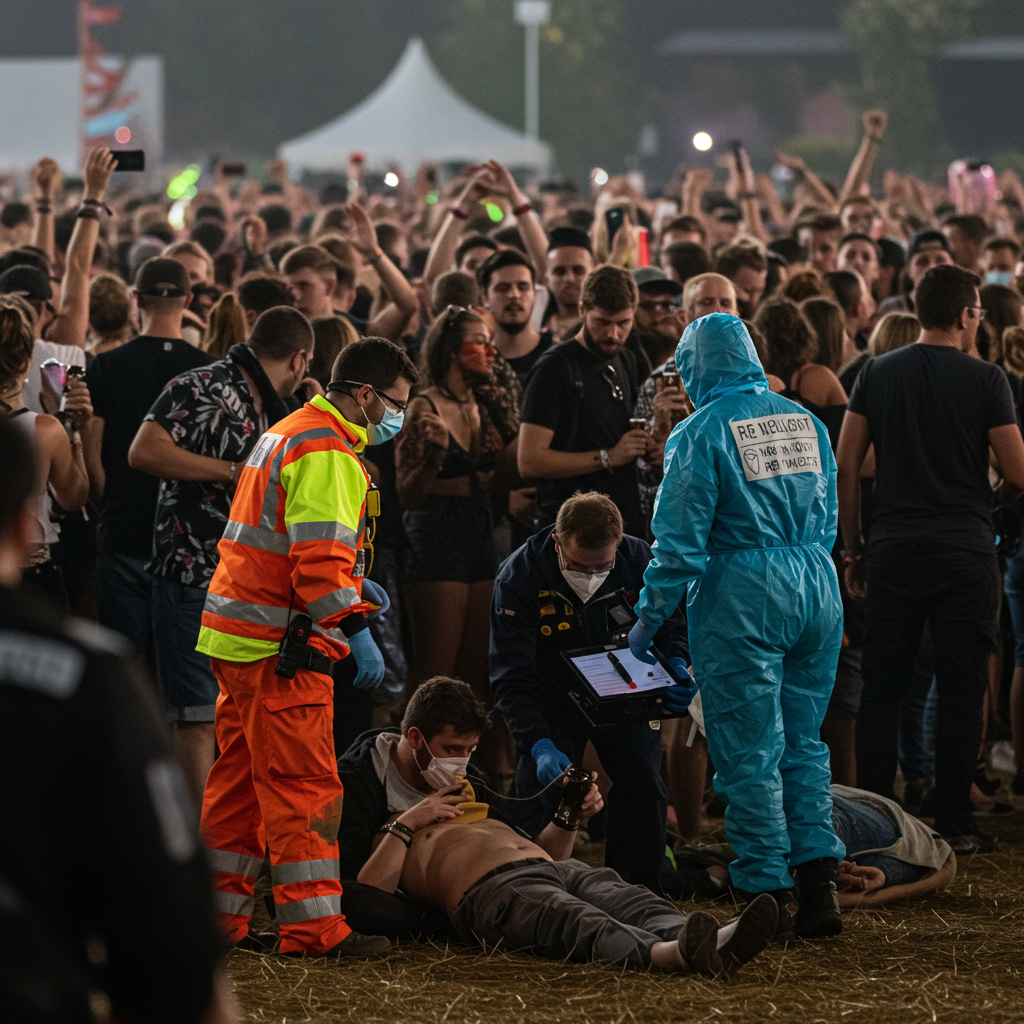The recent implementation of a ban on single-use disposable vapes across the UK has ignited a complex national conversation, shining a stark light on the escalating crisis of youth vaping addiction. While the ban targets environmental concerns and aims to curb underage use, many parents are finding themselves in agonizingly difficult positions, battling powerful addictions their children have developed long before the new rules took effect.
This challenging reality is perhaps best encapsulated by the story of Emma, a mother facing a choice she never imagined. In a desperate attempt to gain some measure of control over her teenagers’ entrenched vaping habits, she has resorted to the deeply uncomfortable action of purchasing their vapes for them. This isn’t a decision made lightly; it runs counter to every instinct she possesses, especially given that buying age-restricted products for minors is illegal. Yet, Emma feels it’s the only way she can manage the situation, driven by a profound need to keep her children safe and potentially reduce their dangerously high nicotine consumption.
The Grip of Teen Nicotine Addiction
Emma’s experience underscores just how pervasive and severe youth vaping addiction has become. For her son, the journey with e-cigarettes reportedly began alarmingly early, potentially even during primary school years. While initially hidden, the habit became undeniable by high school, progressing from subtle denial to serious health consequences. By age 15, he was experiencing breathlessness and recurrent tonsillitis, issues that paramedics suggested could be linked to his continuous vaping.
Witnessing her child’s deteriorating health, coupled with the obvious signs of dependence, Emma felt compelled to intervene drastically. Her strategy involved taking over the supply chain, aiming to ensure the vapes were sourced from reputable suppliers and free from potentially harmful, illegal additives sometimes found in the black market. Critically, she also sought to control the nicotine strength, attempting to steer her children away from high-concentration vapes, reportedly trying to reduce their intake from 20mg down to 10mg. This felt like the only tangible way to impact the intensity of their addiction.
“It went against every bone in my body to do that, but they’re addicted,” Emma explained, highlighting the immense difficulty teenagers face in simply stopping once hooked on nicotine. She even set clear boundaries: if they were caught with devices containing higher nicotine levels, she would cease buying them altogether.
Navigating the Post-Ban Landscape
Despite these personal battles, Emma observes that the recently enacted disposable vape ban, which took effect on June 1st (in England, with other UK nations adopting similar timelines), has had little discernible impact on her children’s nicotine consumption. The ban was primarily introduced to tackle the environmental blight caused by discarded single-use devices – an estimated five million are littered or put into general waste weekly in the UK – and specifically to reduce the rising tide of youth vaping often fueled by cheap, flavorful disposables.
Health experts universally agree that while vaping presents a significantly less harmful alternative to smoking cigarettes for adult smokers, it is absolutely not harmless. For individuals who have never smoked, particularly young people, starting to vape carries risks of potential long-term damage to developing lungs, hearts, and brains. There’s a pervasive concern among public health professionals that vaping acts as a gateway into nicotine addiction, potentially leading to the use of other substances.
The challenges of enforcement and adaptation within the market are already becoming apparent. Kate Pike from the Chartered Trading Standards Institute voices concerns that the ban might not achieve its goals effectively. She notes that legal rechargeable and refillable vapes, some designed to resemble disposables or fitted with pre-filled pods, are still widely available. Worryingly, some of these products appear to be marketed directly towards children – evidenced by packaging containing items like stickers, a clear indicator of an appeal beyond adult consumers. Furthermore, distinguishing between now-illegal disposables and certain legal refillable products can be difficult, making enforcement complex.
Understanding the Depth of Addiction in Young People
The severity of teen vaping addiction is profoundly impacting the lives of young people across the country. At Alder Hey Children’s Hospital in Liverpool, the site of the UK’s first NHS vaping clinic specifically for children aged 11 to 15, the waiting list already stretches for weeks. Professor Rachel Isba, who works at the clinic, describes the intensity of the problem, noting that addiction can be so severe that young people experience withdrawal symptoms even during short periods without vaping, such as during a school lesson. This withdrawal manifests as anxiety, which teenagers may mistakenly believe only vaping can alleviate, creating a vicious cycle.
Some addicted young people are reportedly sleeping with vapes nearby to get nicotine hits during the night. Professor Isba emphasizes that parents should not blame themselves; they are up against a formidable industry. Her clinic provides crucial support, including nicotine replacement therapy (like gums and patches) and talking therapies to help young people understand their triggers, the impact of vaping on their health (some reporting breathlessness or even coughing up blood), and the financial cost of their habit. She strongly advocates for more specialized pediatric addiction services across the NHS, stressing that the current problem far exceeds the capacity of existing resources. The potential for vaping to serve as a gateway to smoking and other dependencies remains a significant concern shared by healthcare professionals.
The Gateway Effect: A Parent’s Grim View
The fear that vaping is not an endpoint but rather a starting point for nicotine use and potentially other drugs is a stark reality for some families. Dan, a father from Twickenham, believes the discussion around youth vaping as a potential issue is already outdated, lamenting that “that horse has bolted.” His personal experience is harrowing: his 17-year-old son was expelled from school after being caught with cannabis in his vape, and a younger son faced similar disciplinary action recently.
Dan is convinced that vaping served as the initial step. “They become addicted to nicotine and then harder stuff follows,” he states. He reports that his sons have since progressed to smoking cigarettes, and his eldest is now addicted to nicotine pouches. This pattern paints a grim picture of the potential trajectory of teen vaping addiction, moving from easily accessible e-cigarettes to more traditional and potentially more dangerous forms of nicotine consumption and substance use.
Regulatory Measures and Ongoing Challenges
In response to the growing crisis, the government has stated it is taking “tough action” against underage vaping. Measures include empowering Trading Standards with the ability to issue immediate £200 fines to retailers caught selling tobacco or vapes to individuals under 18. Furthermore, due to the significant environmental concerns surrounding disposable vapes, retailers are now mandated to provide recycling bins for these products.
However, the views on the effectiveness of these measures are mixed. While the ban addresses both environmental concerns (like the significant waste of lithium) and aims to curb youth access, experts question whether it goes far enough or might have unintended consequences, such as driving consumers towards an unregulated black market or prompting a return to more harmful cigarettes for some adult smokers. The challenge lies in finding a balance: preventing youth addiction while retaining vaping as a potential tool for adult smokers wishing to quit. Future regulations expected next year may focus more on restricting child-appealing flavors and implementing plainer packaging to reduce the marketing appeal to young people.
Addressing the root causes of teen vaping addiction requires a multifaceted approach, combining stricter regulation and enforcement with increased access to specialized healthcare services tailored to young people. Parents navigating this crisis need support, understanding, and practical tools to help their children overcome powerful dependencies forged in a rapidly evolving landscape of nicotine products.
Frequently Asked Questions
Why is quitting vaping so challenging for teenagers?
Quitting vaping is difficult for teenagers primarily because of nicotine addiction. Nicotine is highly addictive, comparable to heroin. Teenagers can develop strong physical and psychological dependence rapidly. As described in the article, this can lead to significant withdrawal symptoms like anxiety, irritability, and difficulty concentrating, which the teenager may then try to alleviate by vaping again, perpetuating the cycle.
Where can parents in the UK seek help for teenage vaping?
Parents in the UK concerned about teenage vaping addiction should first consult with their GP or local health professional. Specialized services are emerging, such as the NHS vaping clinic at Alder Hey Children’s Hospital, which offers support including nicotine replacement therapy and talking therapies. While such dedicated clinics may have waiting lists, health professionals can provide initial guidance and referrals to available local resources.
Did the UK disposable vape ban effectively stop youth vaping?
The article suggests that while the UK disposable vape ban aims to reduce youth vaping, its effectiveness is debated and, according to one parent’s observation, has had limited impact so far on already addicted teenagers. Concerns remain about the availability of legal refillable vapes that resemble disposables, the difficulty of enforcement, and the potential for a black market. Experts indicate that further regulations on marketing, flavors, and packaging may be needed to truly curb underage use.
Addressing the youth vaping epidemic is a complex challenge requiring ongoing efforts from regulators, health services, schools, and families alike.



